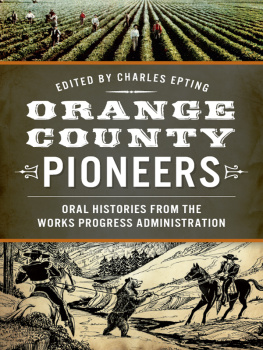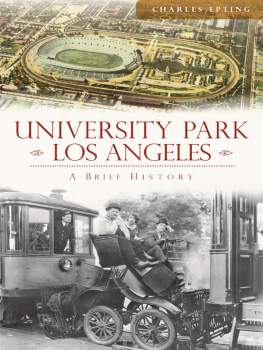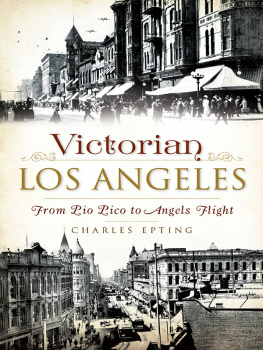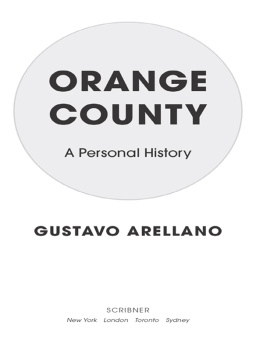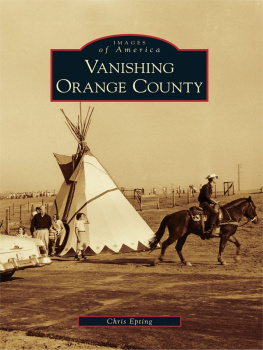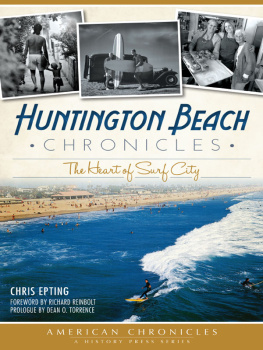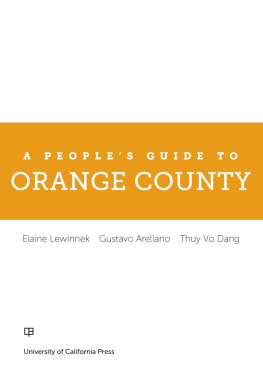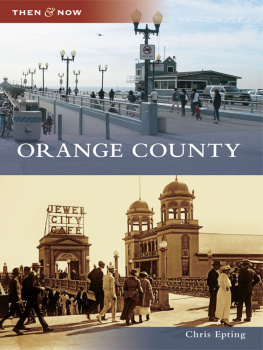
Published by The History Press
Charleston, SC 29403
www.historypress.net
Copyright 2014 by Charles Epting
All rights reserved
First published 2014
e-book edition 2014
ISBN 978.1.62585.287.8
Library of Congress Control Number: 2014952383
print edition ISBN 978.1.62619.758.9
Notice: The information in this book is true and complete to the best of our knowledge. It is offered without guarantee on the part of the author or The History Press. The author and The History Press disclaim all liability in connection with the use of this book.
All rights reserved. No part of this book may be reproduced or transmitted in any form whatsoever without prior written permission from the publisher except in the case of brief quotations embodied in critical articles and reviews.
CONTENTS
ORIGINAL PREFACE
Honor is due the names of those courageous men and women who dared the hazards of the overland trail or the perilous sea voyage to blaze a path and establish a civilization for future generations.
It seems eminently fitting that the names and experiences of Orange Countys Pioneers should be perpetuated in such a manner that their labor in the days of trial and hardship may remain an inspiration to the people of today.
To come into contact with a man or woman who has left the impress of his intellect, personality and perseverance upon his locality, or to peruse an account of his useful life is to be helped in a practical and impressive manner.
It is therefore the object of these compilations to present a true picture of pioneer days by preserving the narratives so graciously and willingly given us by the participants themselves or their immediate descendants.
Some excerpts from old books and histories have been added occasionally to facilitate continuity.
Mrs. G.E. Ashby, Project Supervisor
U.S. Works Progress Administration Project #3105
INTRODUCTION
October 24, 1929, is a day that will always be remembered as Black Thursdaythe day the stock market crashed and the county was plunged into a state of prolonged economic disaster. Although an apt politician, President Herbert Hoover (and his fellow Republican predecessors) were blamed by many for the situation. A few years later, Franklin Delano Roosevelt overwhelmingly won the 1932 presidential election on his promise of a new deal for the American people.
It was these wordsthe New Dealthat came to embody the collective sum of President Roosevelts relief programs during the Depression. Within his famed first one hundred days, Roosevelt established programssuch as the Civilian Conservation Corps (CCC) and the Federal Emergency Relief Administration (FERA)that would go on to pave the way for the rest of his Alphabet Soup Agencies.
It wouldnt be until April 8, 1935, that the New Deals most well-known program was founded: the Works Progress Administration. Before the WPA was eventually dissolved in the middle of World War II (June 30, 1943), an estimated $13.4 billion was spent by the program across the nation. Employment figures are equally staggering; 8 million men and women were employed at various times during the programs eight-year history, with peak enrollment hitting 3.3 million at one time. There was hardly a city in the United States that was not affected by the WPA in some way.
The primary focus of the WPA was construction projects. The obvious goal of such projects was to provide unemployed breadwinners with steady jobs. What the WPA also did with its improvement projects, however, was to provide civic infrastructure to parts of the nation that would not otherwise have been able to afford it. Works constructed included thousands of city halls, libraries, museums, bridges, sewers, irrigation channels and other such improvements.
There were also other facets of the WPA. Women, for example, were provided jobs sewing clothing, staffing nurseries and working in administrative offices. But more important to this work was Federal Project Number One, which was perhaps the most unique part of the WPA (and, consequently, is also one of the programs most enduring legacies).
Federal Project Number One was initially a collection of four programs that focused on providing out-of-work artists, writers, musicians and actors with employment. The fact that President Roosevelt and Harry Hopkins, the head of the WPA, included men and women in the arts in their relief program shows the immense amount of thought and planning behind the New Deal. As with construction projects, the benefits were twofold: men and women were employed by the programs, and small towns across the county benefitted from concerts, plays, murals, statues and books that would have never been created otherwise.

Few realize the sheer size of Los Angeles County when it was founded in 1850. At the time, California consisted of only twenty-seven counties (today there are fifty-eight). Parts or all of modern-day Orange, Kern, Riverside and San Bernardino Counties were originally part of Los Angeles County. Authors collection.
THE IDEA FOR THIS volume came while researching my recent book, The New Deal in Orange County, California. In tracking down all of the countys buildings from the New Deal, it was only a matter of time before I came across frequent references to the Orange County Historical Research Projectmore formally known as WPA Project #3105.
Initially begun under the California State Emergency Relief Administration (SERA) in 1934, Project #3105 was a massive undertaking that sought to synthesize nearly everything that was known about Orange Countys past at that time. About twenty-seven volumes were completed in total (the works are grouped differently in different repositories); topics include subjects as diverse as education, irrigation, government, religion, sports and architecture. Additionally, historical recordsincluding the court case between Don Juan Forster and Pio Picowere reproduced in their entirety. The Works Progress Administration completed the project between the years 1935 and 1937.
Over the years, the products of Project #3105 have been criticized by some as merely consisting of information copied from preexisting sources. While this is undeniably true to some extent, there is still a wealth of original information included in many of the volumes. Furthermore, in the time since Project #3105 was created, sources that were available to the WPA have been lost to history, increasing the value of the project.
My initial firsthand experience with Project #3105 came at the Orange County Archives in Santa Ana, where I found a photocopy of the volume titled Adobes. Although outdated, I recognized that the information contained in the book was invaluable. I spoke with historian Chris Jepsen, who works at the archives, about the project, and while he told me that they did not have a complete set of the volumes, the Santa Ana Public Librarys History Room should have most (if not all) of the products of Project #3105.

The current Santa Ana Public Library, dedicated in 1960, houses the Santa Ana History Room, which serves as a repository for the Work Progress Administrations Project #3105. Without its dedication to local history, this collection would not have been possible. Courtesy the Santa Ana Public Library.
Next page
